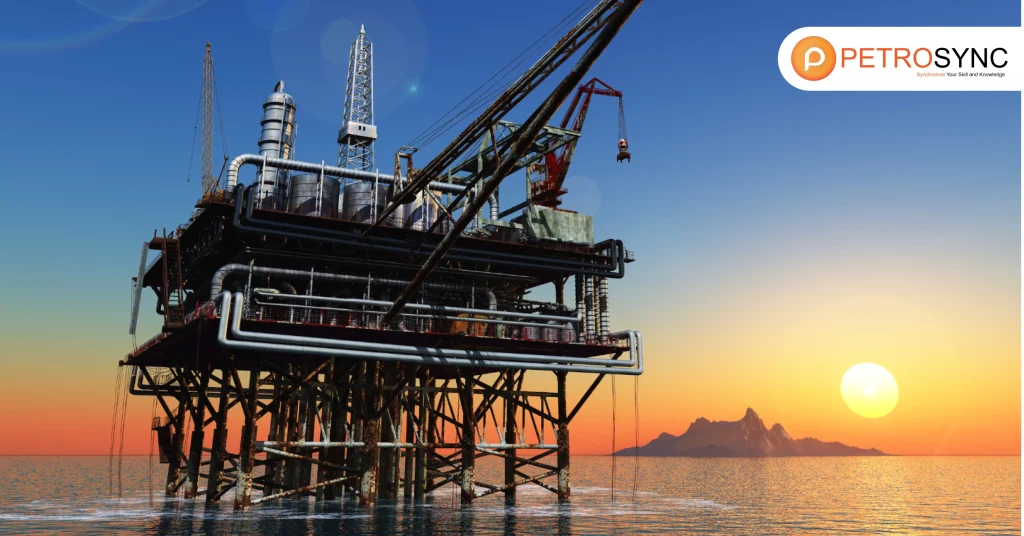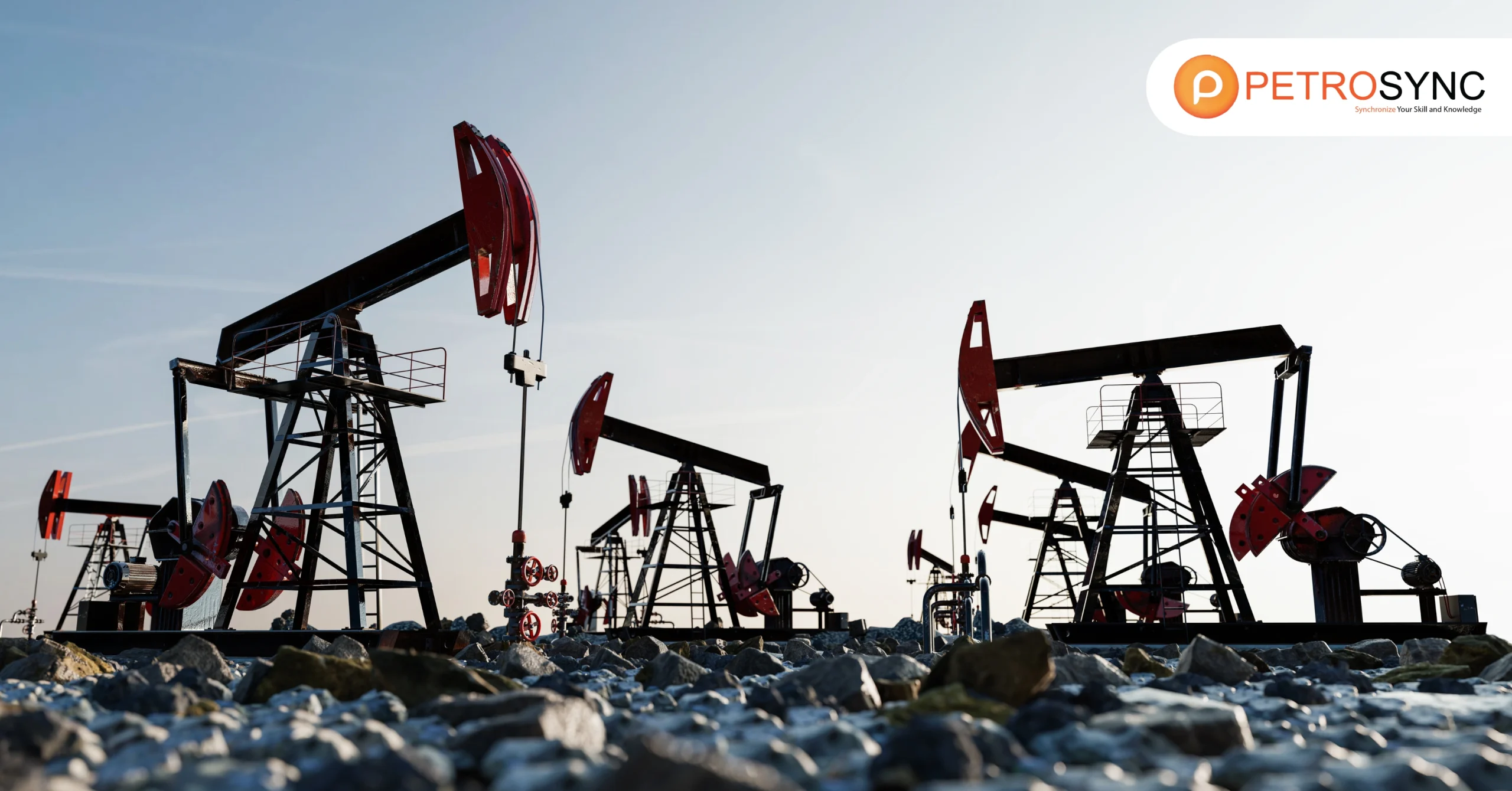Petroleum, also known as “black gold,” is a pillar of the global energy industry, powering many facets of modern life. It drives cars, heats houses, and is the basic material for a wide range of products. Despite its widespread use, many people are unaware of what petroleum is, how it originates, and the processes involved in bringing it to market.
In this article, we will look into petroleum’s origins, extraction, and refining, as well as its varied uses. Understanding these dimensions not only helps us understand the influence of petroleum on our lives, but it also highlights the complexities and significance of the business that supports it.
What Is Meant By Petroleum?

Petroleum meaning is a naturally occurring yellow-black liquid that develops deep beneath the Earth’s surface. The term “petroleum” originates from the Latin words “petra” (rock) and “oleum” (oil), highlighting its formation within rock layers beneath the earth. Hydrocarbons primarily compose petroleum, with additional elements like sulfur, nitrogen, and trace metals.
Refiners remove or treat impurities in petroleum, a fossil fuel that formed millions of years ago from ancient sea creatures’ remains. With the influence of heat and pressure, these organic materials gradually transformed into crude oil, which contains a variety of components.
Crude oil’s appearance varies widely; some types are light and nearly transparent, while others are dense and sticky, resembling tar. Differences in crude oil content influence refining procedures and ultimate products, making petroleum a surprisingly adaptable resource.
Where Petroleum Is Found?
Petroleum typically lies beneath the surface within sedimentary rock layers. These formations, consisting of sandstones, limestones, or shales, serve as natural reservoirs where oil accumulates over extensive geological periods. Certain regions hold the largest known petroleum deposits, while reserves are unevenly distributed across the world.
Most notably, the Middle East, North America, and sections of South America and Russia. Saudi Arabia, Iraq, and Kuwait all have large reserves, making the Middle East a major role in the global oil market. The United States, Canada, and Mexico are North America’s top producers, with massive deposits in the Gulf of Mexico, the Permian Basin, and Alberta’s oil sands.
The discovery of shale oil has increased North America’s production capacity, reaffirming the region’s position as a major oil producer. Petroleum exploration is a complicated procedure that involves geological surveys and cutting-edge technology to discover potential deposits.
Geologists study subsurface structures using seismic surveys, which include sending sound waves through the earth and detecting their reflections. When surveys indicate the presence of petroleum, exploratory drilling is conducted to confirm the presence of oil and assess its viability for extraction.
Where Petroleum Is Used?
It is essential to modern society, providing a fundamental energy source and a critical raw element in a variety of sectors. Refineries convert most of it into fuels like gasoline, diesel, and jet fuel, essential for transportation. Automobiles, planes, and ships use these fuels, underscoring their importance in global logistics and commerce.
It is needed for more than just transportation; it is also used for energy generation and heating. Many power plant, particularly in developing nations, use oil to create electricity, ensuring a consistent energy supply for the people. Furthermore, heating systems fueled by oil are commonly employed in colder places, providing critical warmth throughout the harsh winter months.
The petrochemical sector relies heavily on petroleum for the manufacturing of a wide range of chemicals and materials. Manufacturers rely on it to produce plastics, synthetic rubber, and other polymers used in a wide range of common products.
Various products, including household goods, medical gadgets, automobile parts, and building materials, contain petroleum-derived items. Without petroleum, industries such as healthcare and technology would face enormous difficulty in maintaining present levels of production and innovation.
How Petroleum Is Made
Natural processes create petroleum over millions of years, starting with the deposition of organic material in ancient oceans and lakes. Plants and small sea creatures die, and their remains settle to the seafloor, leaving a dense layer of organic material. Sediment gradually covers this layer, shielding it from the atmosphere and preventing total breakdown.
Under increasing pressure and temperature, the organic material underwent chemical reactions known as diagenesis, which converted it into kerogen, a precursor to oil and gas industry. As the sediment sank further into the earth, temperatures increased, breaking down the kerogen into hydrocarbons in a process known as catagenesis.
Temperature, pressure, and the types of original organisms determine the specific composition of hydrocarbons, creating a variety of petroleum deposits.
How Petroleum Is Extracted
Drilling into the soil to access oil reservoirs is part of the petroleum extraction process. Conventional extraction methods rely on the natural pressure vessel of these reservoirs to propel the oil to the surface. Operators lower the pressure over time and use supplementary recovery procedures, such as injecting water or gas, to maintain stable output levels.
These improved recovery procedures allow firms to remove a greater amount of the oil from a reservoir, extending its productive life. In addition to conventional extraction, unconventional sources such as shale oil and tar sands have gained prominence in recent years. Tight rock formations frequently confine unconventional oil.
Necessitating processes such as hydraulic fracturing to free it. Fracking is the process of injecting high-pressure fluid into rock to generate fissures that allow oil to flow more freely. While these approaches have boosted the availability of oil, they also create environmental problems, such as groundwater contamination and increasing greenhouse gas emissions.
How Petroleum Is Refined
Refiners process crude oil after extraction to separate it into usable components. The first step in distillation heats oil in a column until it evaporates at a specific temperature. As the vapor rises, it cools and condenses at various temperatures, dividing into fractions such as gasoline, diesel, and kerosene.
Cracking, reforming, and treating are additional refining processes that modify the chemical structure of hydrocarbons. Cracking converts large, complex molecules into simpler ones, increasing the production of valuable items like gasoline. Reforms raise the octane rating of gasoline, making it more efficient in modern engines.
Finally, advanced treatment techniques eliminate sulfur and nitrogen, producing cleaner fuels that comply with regulations and reduce pollution.
Maximize Your Petroleum Career with PetroSync’s Programs
The industry is thriving and rewarding, with several work prospects. To remain competitive in an ever-changing market, professionals must stay current on the latest technologies and approaches. Petroleum engineers and geologists play critical roles in this dynamic business. Petroleum engineering integrates science and technology.
To ensure the safe and efficient extraction, refinement, and transportation of oil and gas products. Experts in the field, such as petroleum geologist, analyze geological formations to identify and understand valuable energy resources. For those seeking expertise in this field, Petroleum Industry Training Courses provide essential knowledge and qualifications.
Petroleum Training Kuala Lumpur offers thorough training in all elements of the petroleum sector, from exploration to drilling and refining. PetroSync provides comprehensive training in upstream petroleum economics, risk management, and financial analysis courses. Attendees will learn the information and skills necessary to succeed in a variety of related occupations.

Results-oriented and thorough SEO specialist with extensive experience in conducting keyword research, developing and implementing digital website promotion strategies and plans, managing campaigns to develop company websites in the digital world, excellent knowledge of marketing techniques and principles, and attentive strong attention to detail.







